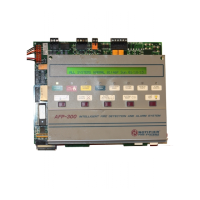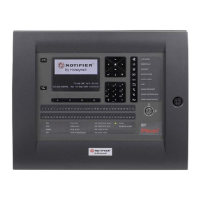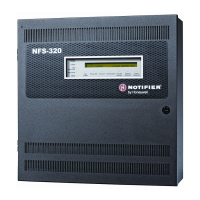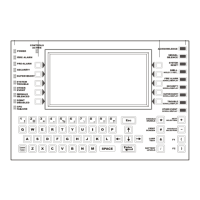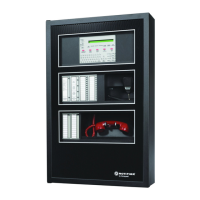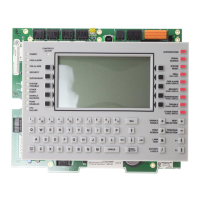Appendix
114 AFP-2800/2802 Manual – P/N 11249 11-Mar-08
8
8
.
.
7
7
.
.
4
4
A
A
N
N
A
A
L
L
O
O
G
G
L
L
C
C
M
M
A
A
N
N
D
D
L
L
E
E
M
M
T
T
E
E
R
R
M
M
I
I
N
N
A
A
T
T
I
I
O
O
N
N
S
S
The LCM is a 1-loop board and can support up to 159 detectors and 159 modules in Flashscan mode or 99
detectors and 99 modules in CLIP mode. The field wiring is electrically isolated from the rest of the system so that
any two-ground faults on separate loops will not cause invalid replies from devices. A short to any other system
circuit will not cause communication loss. The LCM has an earth fault detection circuit with a yellow LED
displaying an earth fault condition.
The LEM is an expansion board that attaches to its LCM parent providing a second loop which has the same
features as the parent loop.
MicroController
8.7.4.1 LOOP WIRING STYLES:
Loops may be operated one of several modes – style 4, style 6 as well as style 7 (refer to diagrams below). Style
4 is an open loop arrangement while styles 6 and 7 are closed loop arrangements. Refer to section 0 for loop
configuration details and to section 8.5.2 for cabling requirements.
Style 4. (Open loop – does not return to the panel, non-redundant)
Port A (Channel A) 3810m maximum, 50 Ω s resistance maximum.
Port B (Channel B) 3810m maximum, 50 Ω resistance maximum.
In style 4, the processor will poll both legs of the “loop” simultaneously through its own driver. If either leg is
shorted (wire-wire), the other leg is not degraded since it is operated from a separate driver.
Style 6. (Closed loop – returns to panel providing a redundant path for open circuit conditions)
Total Loop, 3810m maximum, 50 Ω resistance maximum.
In style 6, the processor polls the loop from one of the drivers (the B-side). If a failure (open circuit) is detected, it
will poll through both ends.
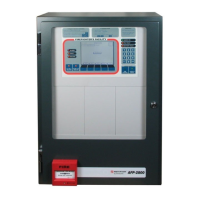
